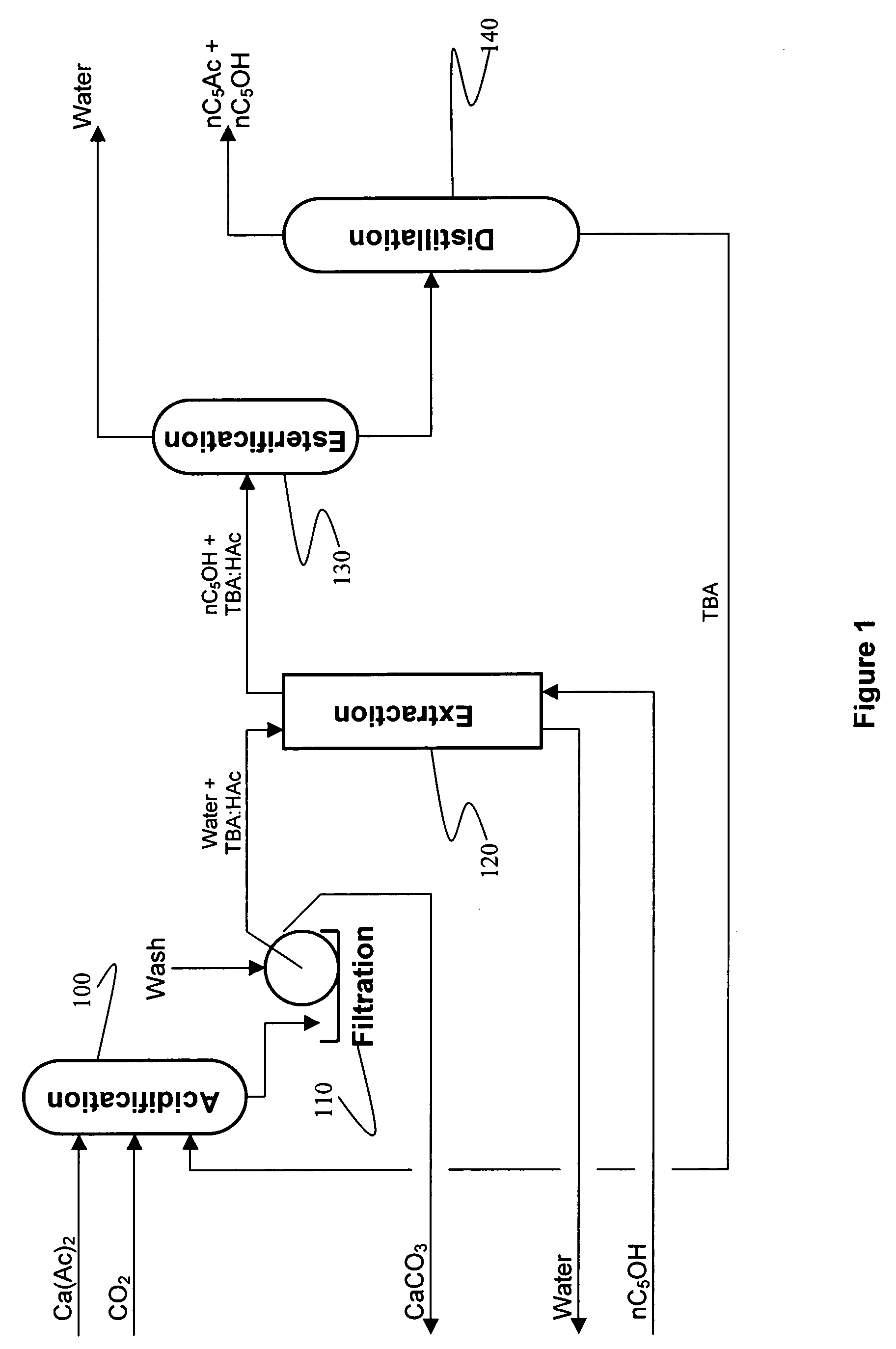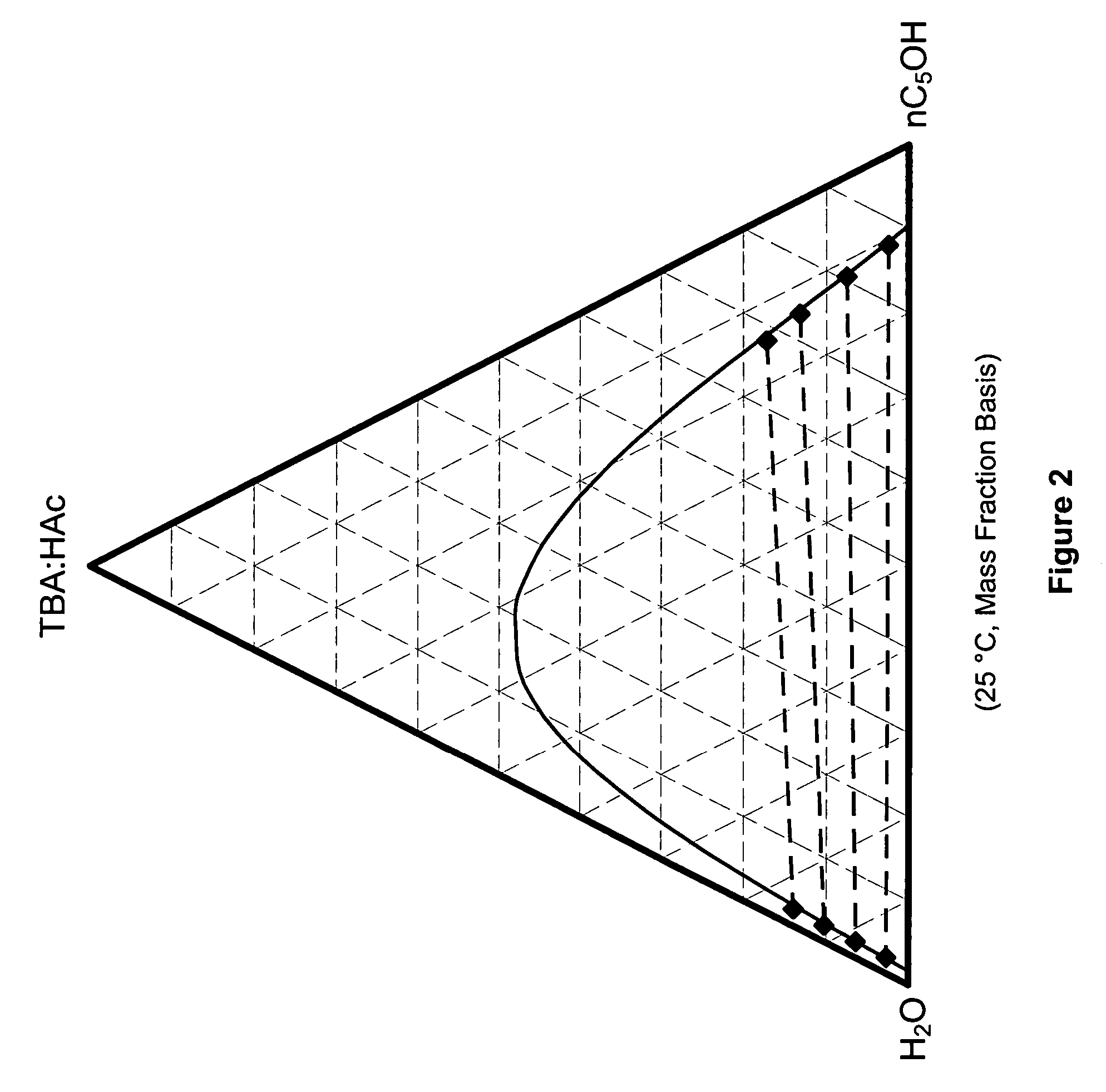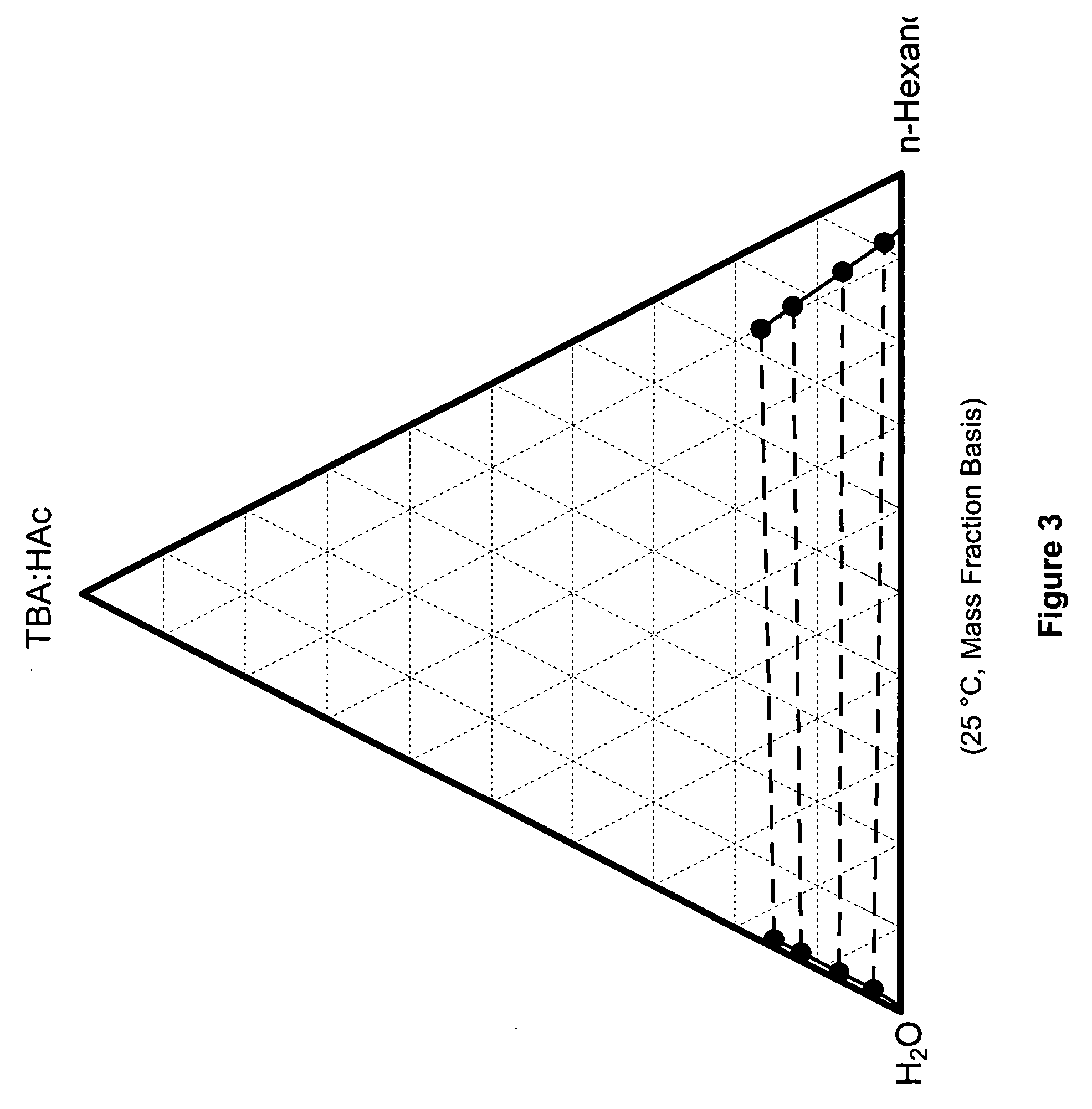Recovery of organic acids
- Summary
- Abstract
- Description
- Claims
- Application Information
AI Technical Summary
Benefits of technology
Problems solved by technology
Method used
Image
Examples
example 1
[0073] 500 ml of an aqueous calcium acetate solution (0.6 molar as acetate) was added to a 1 liter graduated cylinder and the pH was adjusted to 6.9-7.0 using acetic acid. A 5% molar excess of TBA was added, which formed a separate layer, then the solution was sparged with CO2 for 30 minutes at ambient pressure. The liquid mixture became homogeneous with a single layer. A copious white precipitate of CaCO3 was formed. The solution was filtered, the CaCO3 cake was washed once with water, washed again with acetone, dried and then weighed. The acidification experiments were conducted four times with CaCO3 yields ranging from 91.0-96.1% of theoretical. The resulting CaCO3 precipitates were easy to filter and wash. A fine white powder was generated in all cases.
example 2
[0074] The experiment of Example 1 was scaled down to about 50 mls. Side by side experiments were conducted using the acetate solution from Example 1, 0.6 molar calcium lactate, 0.6 molar calcium propionate. After gassing with CO2 for 30 minutes each reaction produced the same volume of CaCO3 precipitate.
example 3
[0075] Example 2 was reproduced except that instead of gassing with CO2, the reaction mixture was gassed with a mixture of nitrogen and CO2 in a ratio of N:CO2 of 10:1. The results were identical to those of Example 2.
PUM
| Property | Measurement | Unit |
|---|---|---|
| Fraction | aaaaa | aaaaa |
| Fraction | aaaaa | aaaaa |
| Fraction | aaaaa | aaaaa |
Abstract
Description
Claims
Application Information
 Login to View More
Login to View More - R&D
- Intellectual Property
- Life Sciences
- Materials
- Tech Scout
- Unparalleled Data Quality
- Higher Quality Content
- 60% Fewer Hallucinations
Browse by: Latest US Patents, China's latest patents, Technical Efficacy Thesaurus, Application Domain, Technology Topic, Popular Technical Reports.
© 2025 PatSnap. All rights reserved.Legal|Privacy policy|Modern Slavery Act Transparency Statement|Sitemap|About US| Contact US: help@patsnap.com



